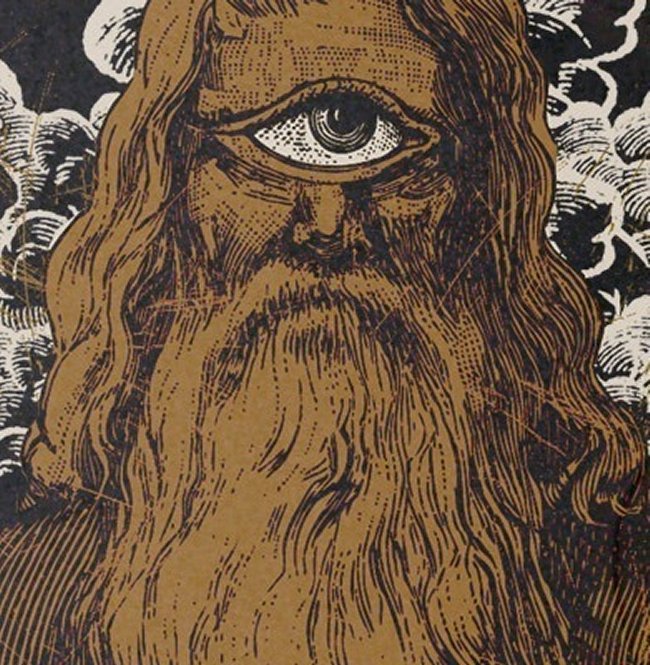The Arimaspians were a tribe of horsemen of normal human size but with only one eye, located in the middle of their forehead.
Based on ancient records, they inhabited a land, at the foot of the Rhipaion Mountains (probably the Carpathians) in northern Skythia.
Arimaspian from the Nurenburg Chronicle, 1493
Arimaspians were a tribe of one-eyed men who lived at the foot of the Rhipaion Mountains (probably the Carpathians) in northern Skythia.
Aeschylus, Prometheus Bound 802 ff. (trans. Weir Smyth) (Greek tragedy C5th B.C.) :
“[Prometheus warns the wandering maiden Io:] But now listen to another and a fearsome spectacle. Beware of the sharp-beaked hounds of Zeus that do not bark, the Grypes (Griffins), and the one-eyed (monôpoi) Arimaspoi (Arimaspians), mounted on horses, who dwell about the flood of Plouton’s (Pluto’s) stream that flows with gold. Do not approach them.”
Herodotus, Histories 3. 116. 1 (trans. Godley) (Greek historian C5th B.C.) :
“But in the north of Europe there is by far the most gold. In this matter again I cannot say with assurance how the gold is produced, but it is said that one-eyed men called Arimaspoi (Arimaspians) steal it from Grypes (Griffins). The most outlying lands, though, as they enclose and wholly surround all the rest of the world, are likely to have those things which we think the finest and the rarest.”
Herodotus, Histories 4. 13. 1 :
“There is also a story related in a poem by Aristeas son of Kaüstrobios [Greek poet C7th B.C.], a man of Prokonnesos. This Aristeas, possessed by Phoibos [Apollon], visited the Issedones; beyond these (he said) live the one-eyed Arimaspoi (Arimaspians), beyond whom are the Grypes (Griffins) that guard gold, and beyond these again the Hyperboreoi (Hyperboreans), whose territory reaches to the sea. Except for the Hyperboreoi, all these nations (and first the Arimaspoi) are always at war with their neighbors; the Issedones were pushed from their lands by the Arimaspoi, and the Skythians (Scythians) by the Issedones.”
Herodotus, Histories 4. 27. 1 :
“Of these too, then, we have knowledge; but as for what is north of them, it is from the Issedones that the tale comes of the one-eyed men [Arimaspoi, Arimaspians] and the Grypes (Griffins) that guard gold; this is told by the Skythians (Scythians), who have heard it from them; and we have taken it as true from the Skythians, and call these people by the Skythian name, Arimaspoi; for in the Skythian tongue arima is one, and spou is the eye.”
Pausanias, Description of Greece 1. 24. 6 (trans. Jones) (Greek travelogue C2nd A.D.) :
“Grypas (Griffins), Aristeas of Prokonnesos [Greek poet C7th B.C.] says in his poem, fight for the gold with the Arimaspoi (Arimaspians) beyond the Issedones. The gold which the Grypas (Griffins) guard, he says, comes out of the earth; the Arimaspoi are men all born with one eye; Grypas are beasts like lions, but with the beak and wings of an eagle.”
Pausanias, Description of Greece 1. 31. 2 :
“At Prasiai [in Attika] is a temple of Apollon. Hither they say are sent the first-fruits of the Hyperboreans, and the Hyperboreans are said to hand them over to the Arimaspoi (Arimaspians), the Arimaspoi to the Issedones, from these the Skythians bring them to Sinope, thence they are carried by Greeks to Prasiai, and the Athenians take them to Delos.”
Pliny the Elder, Natural History 4. 88 (trans. Rackham) (Roman encyclopedia C1st A.D.) :
“Along the [Black Sea] coast [of Europe], as far as the river Tanais [the Don], are the Maeotae [a Skythian tribe] . . . and last of all in the rear of the Maeotae are the Arimaspi (Arimaspians). Then come the Ripaean Mountains [perhaps the Carpathians] and the region called Peterophorus, because of the feather-like snow continually falling there . . . Behind these mountains and beyond Aquilo [Boreas the North Wind] there dwells–if we can believe it–a happy race of people called the Hyperboreans.”
Pliny the Elder, Natural History 7. 10 :
“Also a tribe is reported next to these [i.e. the tribes of Skythia], towards the North, not far from the actual quarter where Aquilo [Boreas the North Wind] rises and the cave that bears its name, the place called the Earth’s Door-Bolt (Ges Clithron)–the Arimaspi whom we have spoke of already, people remarkable for having one yes in the centre of their forehead. Many authorities, the most distinguished being Herodotus [Greek historian C5th B.C.] and Aristeas of Proconnesus [Greek poet C7th B.C.], write that these people wage continual war with the Grypes (Griffins), a kind of wild beast with wings, as commonly reported, that digs gold out of mines, which the creatures guard and the Arimaspi try to take from them, both with remarkable covetousness.”
The Arimaspoi may be the same as the Arimoi tribe mentioned by Homer and Hesiod. Homer also mentions another similarly named Skythian tribe, the Kimmeroi in the Odyssey. According to Herodotos the root word arimos was Scythian.
Homer, The Iliad 2. 780 (trans. Lattimore) (Greek Epic C8th B.C.) :
“The ground echoed under them, Zeus who delights in thunder were angry, as when he batters the earth about Typhoeus, in the land of the Arimoi, where they say Typhoeus lies prostrate.”
Hesiod, Theogony 295 (trans. Evelyn-White) (Greek Epic C8th or C7th B.C.) :
“She [Ekhidna] has her cave on the underside of a hollow rock, far from the immortal gods, and far from all mortals. There the gods ordained her a fabulous home to live in which she keeps underground among the Arimoi, grisly Ekhidna, a Nymphe who never dies, and all her days she is ageless.”
They were constantly at war with the gold-guarding, mountain-dwelling Grypes (Griffins)–winged beasts with the heads of eagles and the bodies of lions.





Комментариев нет:
Отправить комментарий